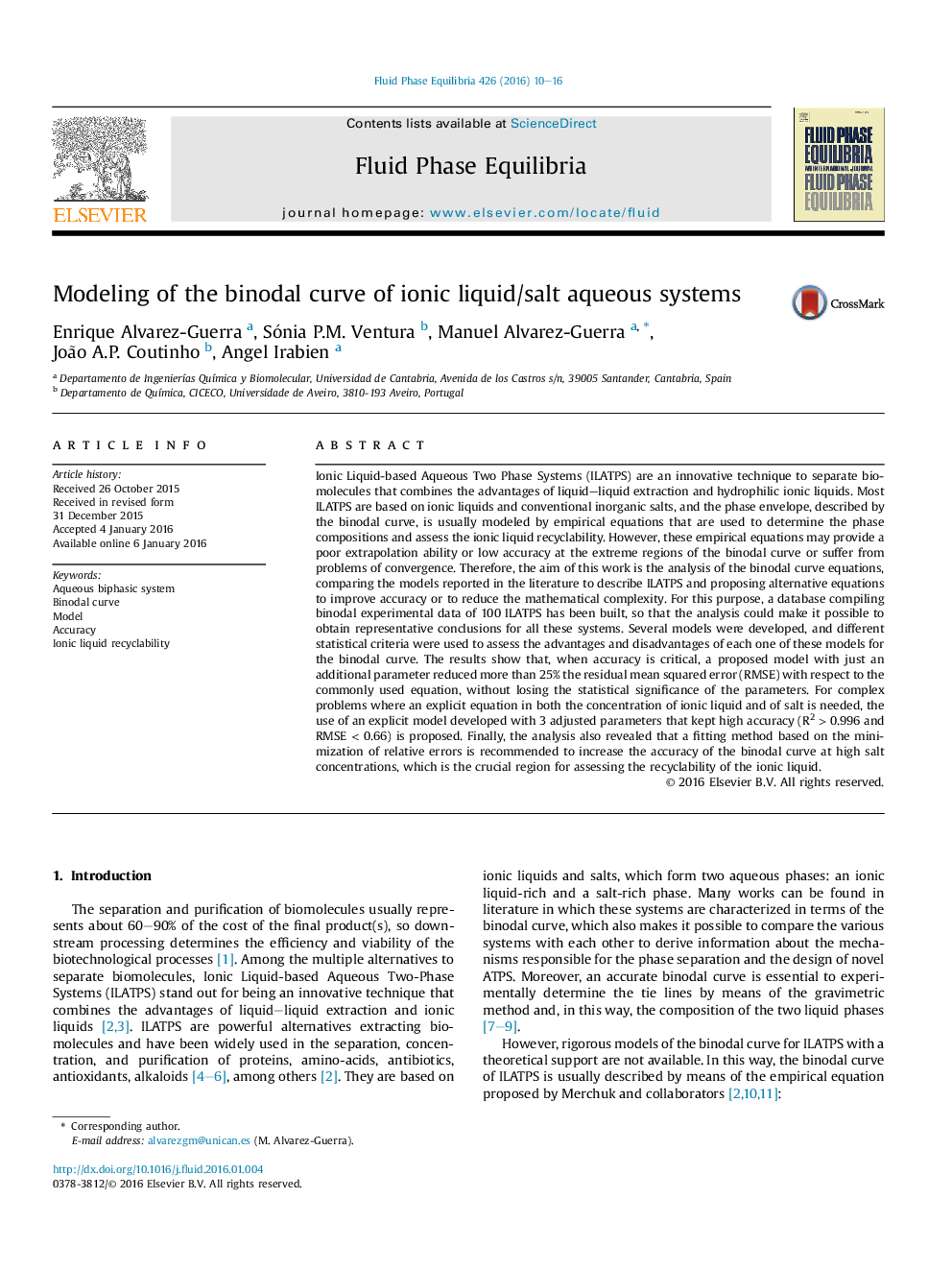| Article ID | Journal | Published Year | Pages | File Type |
|---|---|---|---|---|
| 4768210 | Fluid Phase Equilibria | 2016 | 7 Pages |
â¢A database with binodal data of 100 ILATPS was built to study binodal curve models.â¢Different binodal curve models were proposed as alternative to the conventional one.â¢The models developed can improve accuracy or reduce mathematical complexity.â¢A fitting method based on relative error should be used in IL recyclability studies.
Ionic Liquid-based Aqueous Two Phase Systems (ILATPS) are an innovative technique to separate biomolecules that combines the advantages of liquid-liquid extraction and hydrophilic ionic liquids. Most ILATPS are based on ionic liquids and conventional inorganic salts, and the phase envelope, described by the binodal curve, is usually modeled by empirical equations that are used to determine the phase compositions and assess the ionic liquid recyclability. However, these empirical equations may provide a poor extrapolation ability or low accuracy at the extreme regions of the binodal curve or suffer from problems of convergence. Therefore, the aim of this work is the analysis of the binodal curve equations, comparing the models reported in the literature to describe ILATPS and proposing alternative equations to improve accuracy or to reduce the mathematical complexity. For this purpose, a database compiling binodal experimental data of 100 ILATPS has been built, so that the analysis could make it possible to obtain representative conclusions for all these systems. Several models were developed, and different statistical criteria were used to assess the advantages and disadvantages of each one of these models for the binodal curve. The results show that, when accuracy is critical, a proposed model with just an additional parameter reduced more than 25% the residual mean squared error (RMSE) with respect to the commonly used equation, without losing the statistical significance of the parameters. For complex problems where an explicit equation in both the concentration of ionic liquid and of salt is needed, the use of an explicit model developed with 3 adjusted parameters that kept high accuracy (R2Â >Â 0.996 and RMSEÂ <Â 0.66) is proposed. Finally, the analysis also revealed that a fitting method based on the minimization of relative errors is recommended to increase the accuracy of the binodal curve at high salt concentrations, which is the crucial region for assessing the recyclability of the ionic liquid.
